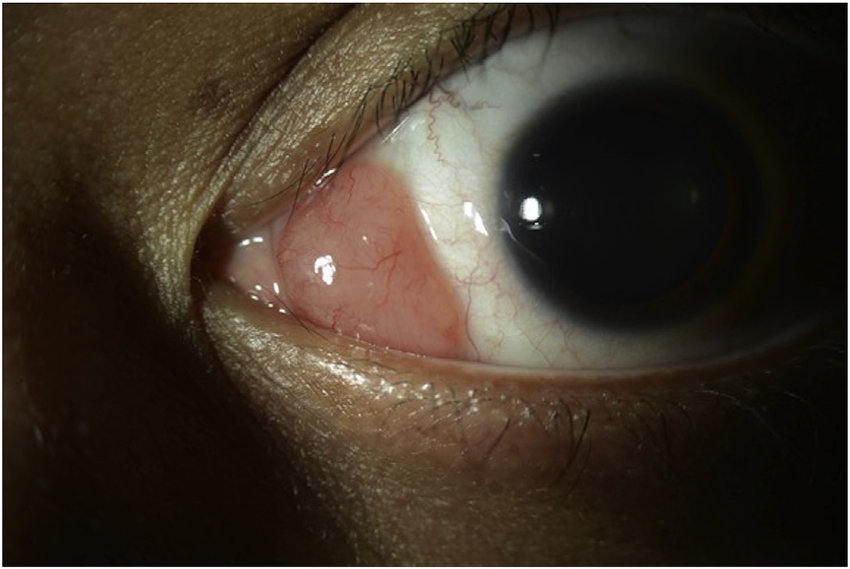Transconjunctival Fatty Hernias: Sutureless Extraction Technique for Enhanced Recovery
Transconjunctival fatty hernias, also known as orbital fat prolapses, are a common concern in oculoplastic and cosmetic surgery. These hernias occur when fat from the eye socket (orbit) protrudes through the conjunctiva, the thin membrane covering the eye. This condition is often observed in older individuals due to natural aging, but it can also result from trauma, congenital factors, or after surgery. While these hernias are typically benign, they can cause aesthetic concerns, such as puffiness or bulging around the lower eyelids, and may lead to functional issues, including discomfort or impaired vision.
Advancements in surgical techniques have led to the development of minimally invasive methods for addressing transconjunctival fatty hernias, with sutureless extraction emerging as a revolutionary approach. This article explores the sutureless extraction technique for transconjunctival fatty hernias, focusing on its benefits, the procedure itself, and its impact on patient recovery.
Understanding Transconjunctival Fatty Hernias

The orbit, or eye socket, is a bony cavity that contains fat, muscles, and other structures that protect and support the eyeball. As we age, the connective tissues surrounding the orbit weaken, and the orbital fat may herniate, causing a visible bulge, typically in the lower eyelid. This is most often seen in the form of transconjunctival fatty hernias, which develop when the fat pushes through the conjunctiva, the delicate membrane lining the inside of the eyelid.
Although not harmful in most cases, these hernias can cause cosmetic issues, resulting in a tired or aged appearance. In more severe cases, the herniated fat may cause pressure on the eye, leading to discomfort or other visual disturbances.
Traditional Treatment: Surgical Intervention
Traditionally, the treatment of transconjunctival fatty hernias involves surgery, with the primary goal of removing the excess fat and tightening the tissues to restore a more youthful appearance. The traditional approach typically involves making an incision on the eyelid, often with sutures required to close the wound afterward. While this technique is effective, it carries certain risks, including scarring, longer recovery times, and potential complications from the suturing process.
The Rise of Sutureless Extraction

In recent years, a more advanced and minimally invasive technique known as sutureless extraction has gained popularity among surgeons for the treatment of transconjunctival fatty hernias. As the name suggests, the technique eliminates the need for sutures during the procedure, offering several significant advantages over traditional methods.
Key Benefits of Sutureless Extraction:
- Reduced Scarring and Downtime
One of the most significant advantages of sutureless extraction is the reduced risk of visible scarring. Since no incisions are made in the skin or through the conjunctiva, there is minimal disruption to the surrounding tissue. This leads to faster healing and less noticeable post-operative marks. Patients can enjoy improved cosmetic results without the worry of scar tissue forming. - Faster Recovery Time
Without the need for sutures, recovery is typically much quicker than traditional surgery. Most patients can return to their normal activities within a few days, as there is less swelling and bruising post-operation. The lack of sutures also means there’s no need for suture removal, which can sometimes cause additional discomfort or complications. - Minimized Risk of Complications
The sutureless approach significantly reduces the risk of infections, as there are fewer incisions and no foreign material (such as sutures) to potentially irritate the wound. Additionally, there is a lower chance of tissue tension, which can sometimes occur with sutured incisions. - Improved Aesthetic Results
Sutureless extraction provides a more natural and refined appearance, as the procedure is less invasive and maintains the integrity of the delicate skin and tissue around the eyes. The absence of stitches means that the tissue heals more smoothly, reducing the likelihood of uneven results or noticeable scarring.
The Sutureless Extraction Procedure
The sutureless technique for transconjunctival fatty hernias involves a series of steps designed to remove the herniated fat without the need for stitches. Here is a step-by-step overview of the procedure:
- Anesthesia:
The procedure typically begins with the administration of local anesthesia to numb the eyelid area. In some cases, general anesthesia may be used depending on the complexity of the procedure or patient preferences. - Accessing the Fatty Hernia:
A small incision is made on the inside of the lower eyelid (the conjunctival surface) to access the herniated orbital fat. This approach avoids any external incisions and ensures that the scars remain hidden inside the eyelid. - Fat Removal:
Using specialized surgical instruments, the surgeon gently removes the herniated fat from the orbital cavity. The goal is to remove only the excess fat, preserving the natural fat compartments that support the eye and eyelid. - Tissue Reinforcement:
After the fat is removed, the surgeon may use techniques like tissue manipulation or laser treatments to tighten the surrounding tissues. This helps prevent future fat prolapse and ensures a smooth, rejuvenated appearance. - Healing:
Since no sutures are required, the conjunctiva heals naturally, and any minor swelling or bruising typically subsides within a few days. The patient can resume most daily activities within a short period.
Post-Operative Care and Recovery
Post-operative care for a sutureless extraction of transconjunctival fatty hernias is generally straightforward, thanks to the minimally invasive nature of the procedure. However, as with any surgery, patients should follow certain guidelines to ensure a smooth recovery:
- Cold Compresses: To reduce swelling and bruising, cold compresses can be applied to the treated area during the first 24 to 48 hours.
- Medication: Pain is usually minimal, but over-the-counter pain relievers can be taken if necessary. Some patients may be prescribed antibiotics or anti-inflammatory medications to prevent infection and promote healing.
- Avoid Strenuous Activity: While recovery is quick, it’s best to avoid strenuous physical activities, including heavy lifting or intense exercise, for at least a week post-surgery.
- Follow-Up Visits: Patients will typically have a follow-up appointment within the first week to ensure proper healing and monitor for any complications.
Conclusion
The sutureless extraction technique for treating transconjunctival fatty hernias is a groundbreaking advancement in oculoplastic surgery, offering significant benefits over traditional methods. With faster recovery times, minimal scarring, and improved cosmetic results, this technique provides patients with an effective solution to restore a youthful, refreshed appearance with less downtime and discomfort. As technology and surgical practices continue to evolve, the sutureless approach will likely become the gold standard for treating transconjunctival fatty hernias, improving the patient experience and outcomes overall.





